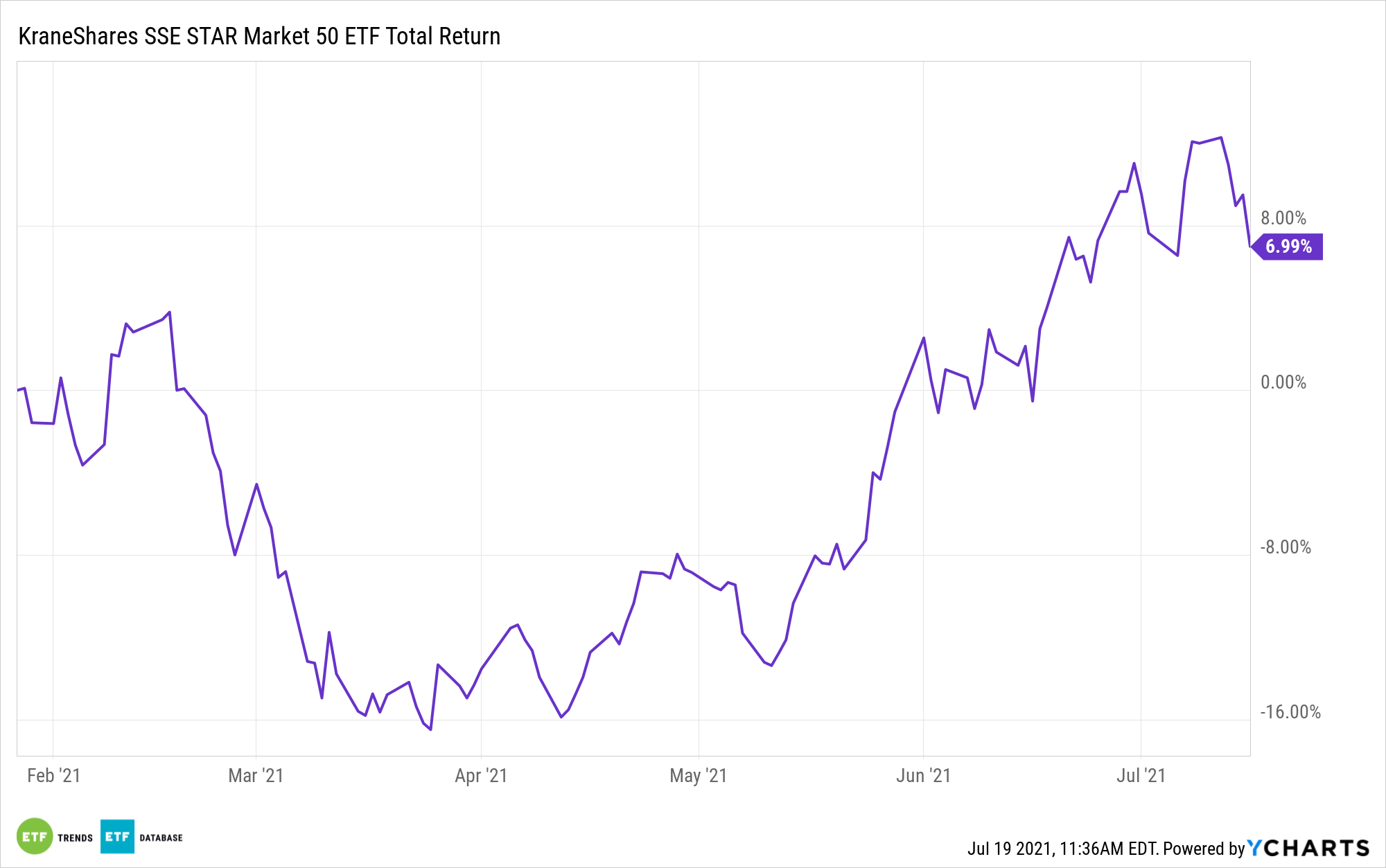On July 22, the Shanghai Stock Exchange Science and Technology Innovation Board, or STAR Market, celebrates its two-year anniversary. In that time, the exchange has quickly become the go-to listings venue for the most innovative, tech-driven companies in China.
The slogan of the SSE STAR Market is “where rising star companies cluster” and reflects the intention of the exchange to be a launchpad for the smaller, typically tech-driven companies that lack the requirements necessary for the broader Chinese exchanges.
The STAR Market mirrors the original intention of the Nasdaq Exchange in the U.S., which provided a home for growth companies that weren’t showing profitability yet, needing the capital necessary to push that growth forward, says KraneShares Chief Investment Officer Brendan Ahern.
“The STAR Board was founded as a venue for more growth companies that have yet to reap profitability, to be able to raise capital from investors via an IPO in order to fund their future growth,” added Ahern.
How the STAR Market Helps Start-Ups
The SSE STAR Market provides a beneficial venue for start-ups because it has more lenient regulations that are geared toward these types of companies. Companies can then turn around and use the capital raised from listing to reinvest in research in development that will continue to drive them forward.
The Shenzhen and Shanghai Stock Exchanges both have a daily up and down limit of 10%, meaning no stock’s price can rise or fall greater than 10% in a single day. This restriction is waived for one day following an IPO.
Meanwhile, the STAR Market has a daily limit up/limit down of 20% and this limit does not apply for the first 5 days of trading after an IPO, according to the SSE website.
Without the more stringent “circuit breakers,” Ahern explains that like the early 1970s with Nasdaq’s inception, there’s the potential for a lot of volatility within the STAR market stocks.
“That volatility can cut both ways, and we’ve been big beneficiaries thus far,” he said, but that for investors, “it’s something to be aware of, that it could be volatile.”
Even given recent regulatory crackdowns by China that have impacted the tech sector, Ahern believes that companies will still continue to list with the STAR market, albeit a bit differently for the time being.
“I think in the short run, the STAR board remains a beneficiary,” as companies are more likely to dual-list in Hong Kong and on the STAR Market, or through some other combination.
Looking forward, Ahern anticipates continued growth for the STAR Market. Currently the STAR Market only accounts for 5% of the A-share market in China, “a number that is growing over time, and we expect that to continue to grow.”
KSTR a Potential Bright Spot for Investors
The KraneShares SSE STAR Market 50 Index (KSTR) tends to be a purer play on growth, explains Ahern.
Standard A-share portfolios based on legacy Chinese economics invest in energy, industrials, financials, and materials, and therefore tend to have a bias toward more value. KSTR, however, is focused heavily on growth with a tilt toward technology.
The fund has a sector allocation of 56% to information technology and 19% to healthcare—primarily biotech investments, according to Ahern. That’s followed by industrials at 10%, which are “more high end manufacturing and quasi-tech plays,” he said.
KSTR tracks the Shanghai Stock Exchange (SSE) Science and Technology Innovation Board 50 Index, a benchmark of the 50 largest companies listed on the STAR Market. To be eligible for inclusion in the index, stocks must meet certain market capitalization and liquidity screens, and have been trading for at least 11 days.
KSTR has risen 22.59% over the last 3 months. It has an operating expense of 0.89%.

For more news, information, and strategy, visit the China Insights Channel.

